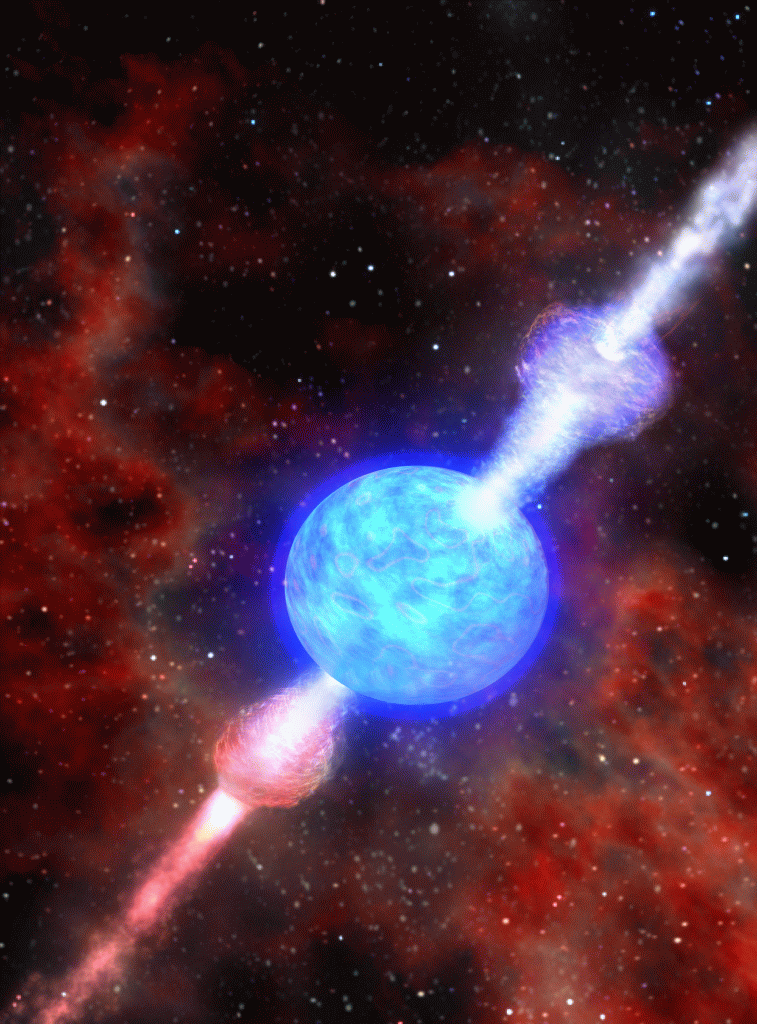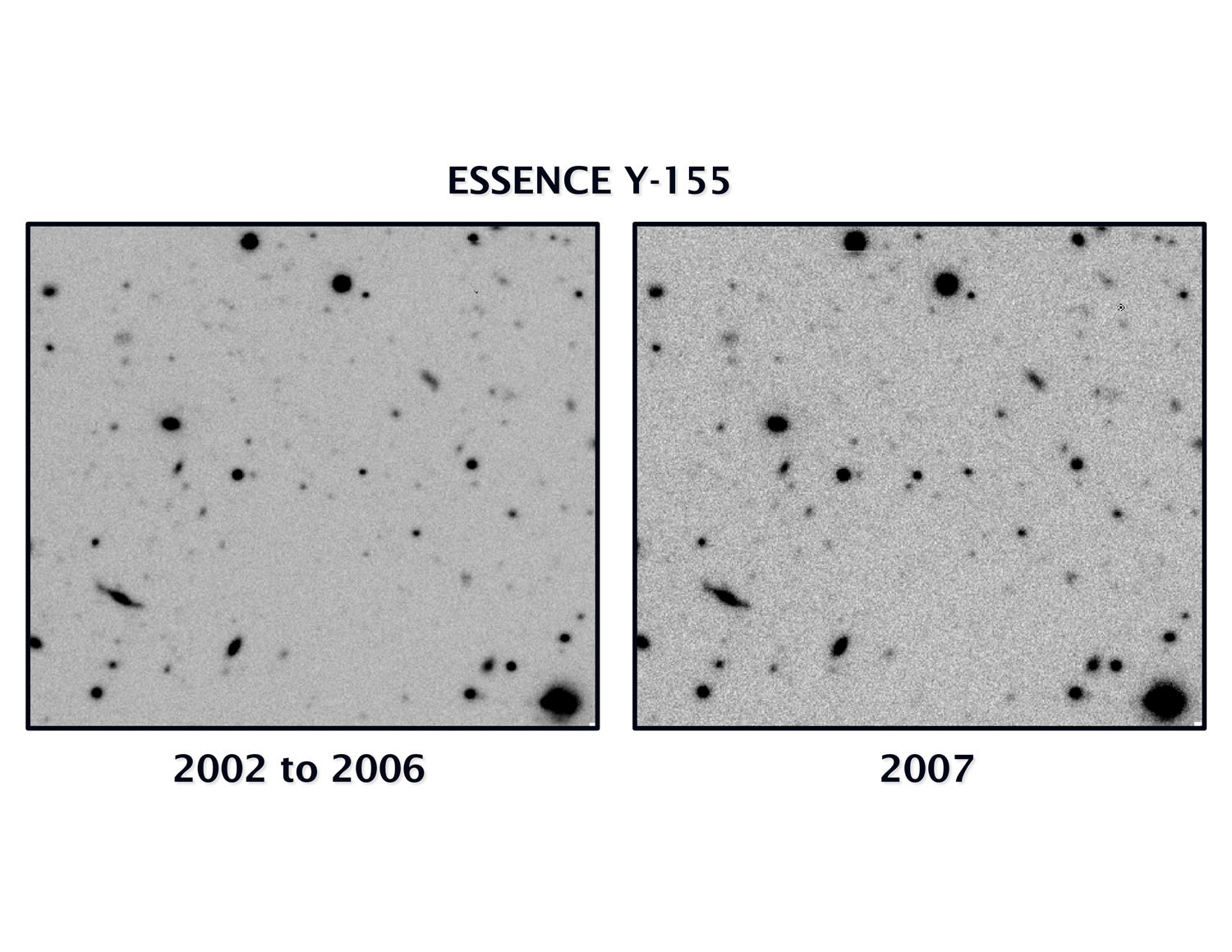[/caption]
Nova, “new star”; supernova, a “super” nova; hypernova, a super-duper, or super super, nova!
This word appeared in the astronomical literature at least as early as 1982, and refers to a kind of core-collapse supernova far brighter (>100 times) than usual; its meaning has changed somewhat, and today generally refers to the core collapse of particularly massive stars (>100 sols), whether or not they are spectacularly brighter than other core-collapse supernovae (though they are that too).
Most times you’ll come across hypernovae in material on gamma ray bursts (GRBs), many of which seem to involve emission of electromagnetic radiation with total energy many times that from ordinary supernovae (whether core collapse or Type Ia). Long-duration GRBs have jets, presumably from the poles of the temporary accretion disk which forms around the new black hole at the heart of the collapsed core of the progenitor (short-duration GRBs, which also produce jets, are thought to be the merger of two neutron stars, or a neutron star and a stellar-mass black hole), but even when viewed side-on (i.e. not looking into one of the jets), these GRBs are intrinsically much brighter than other core collapse supernovae.
If a supernova were to occur a few hundred light-years from us, we’d certainly notice it, and there might be some impact on our atmosphere; if there was a hypernova the same distance away, we’d suffer (not only from the increased incidence of cancer due to the far greater intensity of cosmic rays, but also from changes in weather and climate, and damage to ecosystems); if the jet were aimed directly at us, we’d be toast (while those on the other side of the world would survive the few seconds-long blast, they’d die from the consequences).
Fortunately, it seems there are no stars likely to go hypernova on us … at least not within a few tens of thousands of light-years. Whew!
Have I whet your appetite for more? Check these sites out! Brighter than an Exploding Star, It’s a Hypernova! (NASA’s Imagine the Universe), Face on Beauty (Phil Plait), and Hypernova (Swinburne University).
Like everyone else, Universe Today writers love a good story about explosions … so there are quite a few on hypernovae! Some examples: Gamma Ray Bursts and Hypernovae Linked, ESO Watches Burst Afterglow for Five Weeks, and Carbon/Oxygen Stars Could Explode as Gamma Ray Bursts.
No surprise that Astronomy Cast episode Gamma-Ray Bursts features hypermovae! Back in 2007, after attending the American Astronomical Society meeting, Pamela learning something new about hypernovae; what? Well, check out the episode, What We Learned from the American Astronomical Society and find out for yourself!


